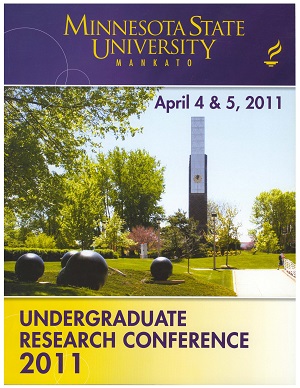National Museum of Iraq: Curating a New Identity
Location
CSU 201
Start Date
4-4-2011 9:00 AM
End Date
4-4-2011 10:30 AM
Student's Major
Art
Student's College
Arts and Humanities
Mentor's Name
Curt Germundson
Mentor's Department
Art
Mentor's College
Arts and Humanities
Description
In April 2003, the National Museum of Iraq was plundered and the substantial majority of its artifacts were looted. The Iraqi people have lost important elements of their socio-cultural identity; the recovery of these priceless items has been slow. By drawing on examples from past and current museum installations, this paper investigates how art has been used for identity formation. Adolf Hitler‘s 1937 ―temple of art‖ for example showed Germans as descendants of a Classical ―master race.‖ Fred Wilson‘s 1992 installation in Baltimore deconstructed the validity of such a master narrative, questioning the predominance of one discourse over another. This paper tries to argue that the restoring of the stolen artifacts and their display in terms of Iraq‘s ethnic multiplicity is a vital step and an opportunity in the creation of a new and diverse Iraq, one in which the various ethnicities are given voice, counter to the identity pushed previously by Saddam Hussein. Thus, the reconceptualization of the National Museum of Iraq into a site of heterogeneous and diverse identity formation is one of many tiers that can be used to reduce what Hofstede calls the ―Power Distance‖, helping to shape a new Iraqi nation.
National Museum of Iraq: Curating a New Identity
CSU 201
In April 2003, the National Museum of Iraq was plundered and the substantial majority of its artifacts were looted. The Iraqi people have lost important elements of their socio-cultural identity; the recovery of these priceless items has been slow. By drawing on examples from past and current museum installations, this paper investigates how art has been used for identity formation. Adolf Hitler‘s 1937 ―temple of art‖ for example showed Germans as descendants of a Classical ―master race.‖ Fred Wilson‘s 1992 installation in Baltimore deconstructed the validity of such a master narrative, questioning the predominance of one discourse over another. This paper tries to argue that the restoring of the stolen artifacts and their display in terms of Iraq‘s ethnic multiplicity is a vital step and an opportunity in the creation of a new and diverse Iraq, one in which the various ethnicities are given voice, counter to the identity pushed previously by Saddam Hussein. Thus, the reconceptualization of the National Museum of Iraq into a site of heterogeneous and diverse identity formation is one of many tiers that can be used to reduce what Hofstede calls the ―Power Distance‖, helping to shape a new Iraqi nation.
Recommended Citation
Kapadia, Ajay S.. "National Museum of Iraq: Curating a New Identity." Undergraduate Research Symposium, Mankato, MN, April 4, 2011.
https://cornerstone.lib.mnsu.edu/urs/2011/oral-session-01/2



